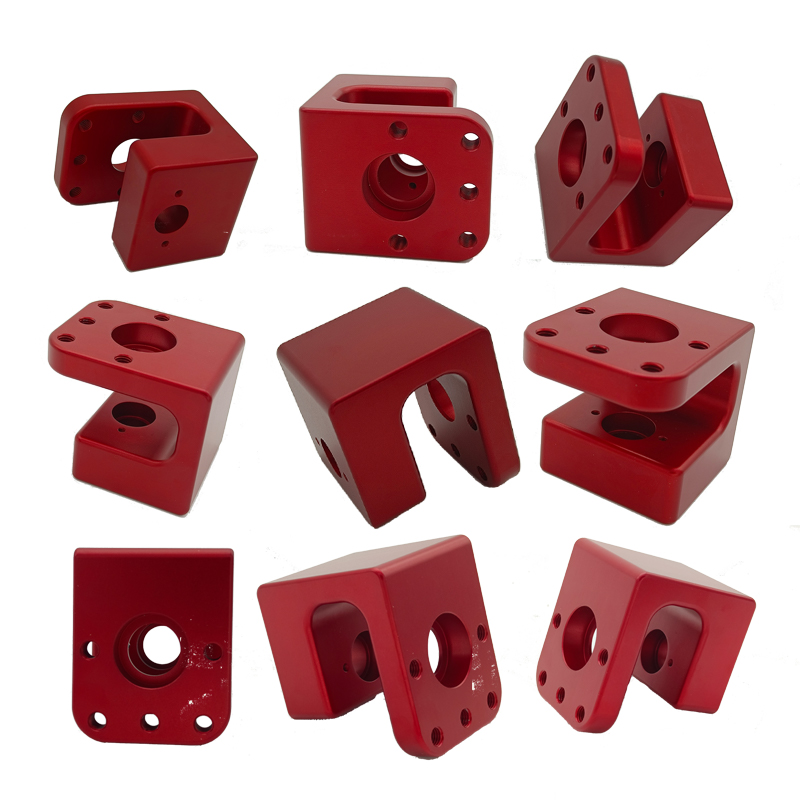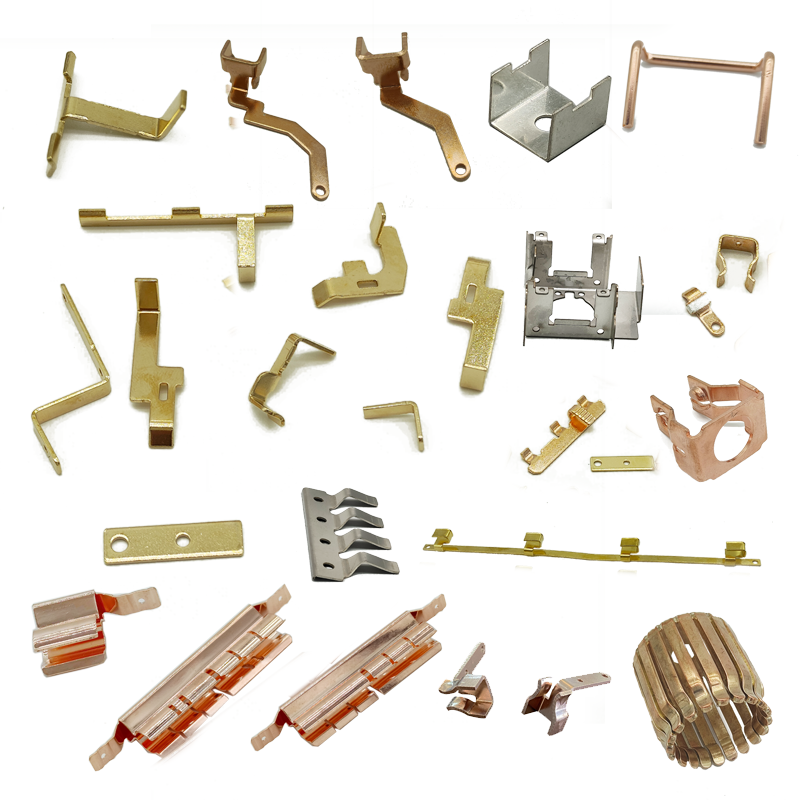How to Choose a Stamping Parts Factory
Choosing a high-quality stamping parts factory is crucial for ensuring product quality, delivery efficiency, and long-term cooperation stability. This is especially true for companies requiring customized, high-precision stamping parts (such as equipment manufacturing, automotive parts, and electronic hardware industries). Evaluation criteria should be established based on five core dimensions: technical strength, quality control, production capacity, service level, and cost compliance. The following is a detailed breakdown:
I. Core Evaluation Criteria: 6 Key Dimensions (Priority Order)
1. Technical Strength: Determines Product Precision and Customization Capabilities (Primary Assessment)
The core competitiveness of stamping parts stems from technology. It is essential to verify the factory’s “hard power” and “soft power”:
Equipment Configuration:
Basic Equipment: Does the factory possess high-precision punch presses (pneumatic/hydraulic/CNC punch presses, recommended tonnage range of 10-300T to meet the needs of different sheet thicknesses), CNC bending machines, laser cutting machines (for pre-stamping blanking), and mold processing equipment (CNC milling machines, grinding machines, EDM wire cutting)? Equipment brand and precision parameters (punch press repeatability ≤ ±0.01mm, bending angle accuracy ≤ ±0.5°) directly affect product tolerances.
Automation level: Whether the equipment is equipped with robotic arms, automatic feeders, and multi-station stamping machines (reducing human error and improving batch production stability), especially for large-volume orders, automated equipment can reduce the defect rate (PPM value).
Mold development and maintenance capabilities: Molds are the “soul” of stamped parts. Does the factory have independent mold design (proficient in using 3D software such as SolidWorks and UG), manufacturing, trial molding, and repair capabilities? Customized orders require rapid mold development response. Mold development cycles in mature factories are typically ≤ 7-15 days (except for complex molds), and they can provide mold life commitments (generally ≥ 500,000 stamping cycles).
Mold library management: Whether there are standardized mold storage and maintenance procedures (such as rust prevention treatment and regular inspections) to avoid product precision degradation due to mold wear.
Process Technology Reserves:
Ability to handle complex processes: such as progressive die stamping, multi-stage composite stamping (integrated blanking, bending, stretching, and flanging), and precision micro-stamping (hole diameter ≤1mm, plate thickness ≤0.1mm). Process solutions or samples of similar products can be requested.
Material Compatibility: Familiarity with the stamping characteristics of different metal materials (cold-rolled steel, stainless steel, aluminum alloy, copper, etc.), and the ability to recommend suitable materials based on product requirements, and resolve common problems such as material springback and cracking.
2. Quality Control: Ensuring Product Consistency and Reliability
The quality of stamped parts directly affects the safety of end products (such as automotive parts and electronic equipment). The factory’s “full-process quality control system” needs to be examined:
Quality Management System Certification: Whether the factory has passed authoritative certifications such as ISO9001 (basic quality system), IATF16949 (automotive industry-specific certification, if used in the automotive field), and ISO13485 (medical field). Certification certificates must be valid and verifiable through official websites.
Testing Equipment and Processes:
Standard Testing Equipment: Does the factory possess a projector, 2D/3D measuring instrument (for dimensional accuracy), hardness tester (for material hardness), salt spray tester (for rust resistance), tensile testing machine (for material strength), etc., to avoid errors caused by purely manual visual inspection?
Quality Control Process: Does the factory implement “First Article Inspection (three inspections: self-inspection, mutual inspection, and specialized inspection) → Patrol Inspection (sampling inspection every 100-500 pieces) → Final Inspection (full inspection/sampling inspection of finished products)”? Can it provide a complete inspection report (including dimensional data and defect analysis)?
Defect Rate Control: The factory is required to provide PPM values (defect rate per million pieces) for past orders. High-quality factories typically have a PPM value ≤100 for precision stamping parts (i.e., a defect rate ≤0.01%) and can provide traceability and improvement solutions for defective products (such as 8D reports).
3. Production Capacity: Matching Order Size and Delivery Cycle
It is essential to ensure that the factory’s capacity and delivery time match your own needs to avoid “insufficient capacity leading to delayed delivery” or “overcapacity resulting in excessive costs”:
Capacity Scale:
Monthly Capacity: Based on your own order volume (e.g., 100,000 units vs. 1 million units per month), examine the factory’s number of machines, production lines, and shift arrangements (whether it supports 24-hour production).
Flexible Production Capacity: Can the factory handle both large-volume orders and small-batch customized orders (e.g., sample orders, trial production orders)? Is the minimum order quantity (MOQ) for small-batch orders reasonable? (High-quality factories can support MOQ=100 units or less.)
Delivery Cycle:
Regular Orders: Inquire about standard delivery times (e.g., 7-15 days) and whether they can meet urgent orders (e.g., 3-5 day expedited processing).
Supply Chain Stability: Does the factory have stable raw material suppliers (e.g., well-known steel mills such as Baosteel and Ansteel)? Can it cope with risks such as raw material price increases and shortages to avoid delivery delays due to raw material issues?
Production Management: Does the factory employ ERP, MES, or other production management systems to achieve order progress visualization (e.g., real-time production status and delivery time tracking)? Standardized production management reduces the risk of “incorrect or missed orders.”
4. Service Level: Ensuring Smooth Cooperation and Efficient Problem Solving. In customized stamping parts cooperation, communication efficiency and response speed are crucial. The factory’s “customer-oriented capabilities” must be assessed:
Technical Communication: Can the factory quickly understand the customer’s 2D/3D drawings (e.g., CAD, STEP formats) and proactively offer suggestions for drawing optimization (e.g., process feasibility, cost optimization, tolerance adjustment), rather than simply “producing according to the drawings”?
Sample Service: Can the factory provide free or low-cost samples (sample fees are generally deductible from bulk orders)? Is the sample delivery cycle ≤3-7 days? Can the factory quickly transition to mass production after sample confirmation?
After-Sales Response: In case of quality issues or delivery delays, can the factory provide solutions within 24 hours? Does the factory support returns, exchanges, and replenishment? In long-term cooperation, can the factory provide regular follow-ups and product optimization suggestions?
Customization Capabilities: Can the factory meet special needs, such as surface treatment (electroplating, spraying, passivation), packaging requirements (moisture-proof, scratch-proof, custom labels), and special tolerances (e.g., ±0.005mm high precision requirements)?
5. Cost Reasonableness: Cost-effectiveness, not just the lowest price. High-quality stamping parts factories typically offer “reasonable but not the lowest” quotes. Excessively low prices may conceal quality risks (e.g., shoddy workmanship, inferior molds). A comprehensive evaluation of “cost-effectiveness” is necessary: Quotation Composition: Request a detailed quotation from the factory, clearly specifying raw material specifications, processing fees, mold fees (if mold opening is required), surface treatment fees, packaging fees, and transportation fees to avoid hidden charges later.
Mold Costs: Is the mold opening fee reasonable (depending on mold complexity, simple molds cost several thousand yuan, complex progressive molds cost tens to hundreds of thousands of yuan)? Can mold ownership be negotiated (e.g., after the customer pays for mold opening, the mold belongs to the customer)?
Long-Term Cooperation Advantages: Does the factory support bulk purchase discounts, long-term cooperation price lock-in, and can the factory share cost optimization opportunities with the customer (e.g., reducing processing fees through process improvements)? 6. Compliance and Reputation: Avoiding Cooperation Risks
Compliance Qualifications: The business license must include “stamping processing” in the business scope. If export orders are involved, the factory must have import and export rights and be able to provide the necessary customs clearance documents (such as certificates of origin and material certificates).
Environmental Compliance: Although stamping processing generates relatively little pollution, when surface treatments (such as electroplating) are involved, it is necessary to confirm that the factory has environmental qualifications (such as a pollution discharge permit) to avoid production shutdowns due to environmental issues, which could affect order delivery.
Industry Reputation: Use online searches (such as Qichacha and Tianyancha) to check if the factory has any administrative penalties or legal disputes. Consult with peers or upstream and downstream companies for their cooperation evaluations. Prioritize factories with more than 3 years of experience in the industry and no negative reputation.
II. Practical Inspection Process (From Screening to Confirmation of Cooperation)
Initial Screening (Online/Telephone Communication): Provide product drawings and requirements (material, dimensional tolerances, batch size, delivery time, surface treatment) to request quotations and technical solutions from factories. Eliminate factories with unreasonable quotations or those that cannot meet core requirements (such as high precision and short delivery time).
The factory is required to provide its business license, system certification certificate, equipment list, and similar product case studies (samples or pictures) to initially assess whether its technology and qualifications meet the standards.
Sample Verification (Critical Step): Select 2-3 candidate factories and place a small-batch sample order (or apply for free samples). Focus on verifying:
Sample Accuracy: Use testing tools to check if dimensional tolerances meet requirements;
Product Consistency: Randomly sample multiple items to observe appearance (no burrs, deformation, cracks) and dimensional uniformity;
Delivery Speed: Whether samples are delivered on time as promised.
On-site Inspection (Essential for large-volume/long-term cooperation):
Inspect the workshop environment: Is the equipment clean and orderly? Are there clear zoning areas (raw material area, production area, finished product area, mold area)? Is there oil accumulation on the floor (reflecting management level)?
Verify the Quality Control Process: Observe whether workers perform first-piece inspection and patrol inspection, whether testing equipment is used normally, and whether testing records can be viewed.
Communicate Details: Communicate in depth with production managers, technicians, and quality inspectors to understand their professionalism (e.g., whether they can answer process questions and provide solutions for quality problems). Small-batch trial production (final confirmation): After the sample passes inspection, place a small-batch trial production order (e.g., 1000-5000 pieces) to verify the factory’s batch production stability (defect rate, delivery time compliance), packaging compliance, and logistics timeliness.
Sign a formal contract: Clarify the rights and responsibilities of both parties: product quality standards (with testing methods), delivery date, payment method (e.g., 30% prepayment, 70% balance upon receipt and acceptance), liability for breach of contract (e.g., compensation ratio for delayed delivery), mold ownership, after-sales terms, etc.
III. Avoidance Tips: 3 Common Misconceptions
1. Focusing only on price, ignoring quality: Low-priced orders may result in more burrs, larger dimensional deviations, and easily damaged molds, leading to higher rework costs. It is recommended to prioritize factories that offer “meeting quality standards + reasonable prices.”
2. Placing orders blindly without confirming mold capabilities: Customized stamping parts require mold development. If the factory has poor mold development capabilities, it may lead to repeated sample modifications and short mold lifespan. It is necessary to confirm the mold design and lifespan commitment in advance.
Ignoring support for small-batch orders: If you have trial production or small-batch order needs, you need to confirm the factory’s minimum order quantity and delivery time in advance to avoid being unable to cooperate because the factory only accepts large-batch orders.
Summary: The core logic for choosing a high-quality stamping parts factory is: technical matching (able to produce) → reliable quality (good production) → sufficient production capacity (able to deliver) → excellent service (smooth cooperation) → reasonable cost (high cost-effectiveness). Through a full-process evaluation of “drawing communication → sample verification → on-site inspection → small-batch trial production,” cooperation risks can be minimized, and long-term stable partners can be found. For high-precision, high-requirement stamping parts (such as in the automotive and electronics fields), it is recommended to prioritize factories with IATF16949 certification, automated production equipment, and a sound quality control system; for ordinary hardware stamping parts, focus on production capacity, delivery time, and cost-effectiveness.




